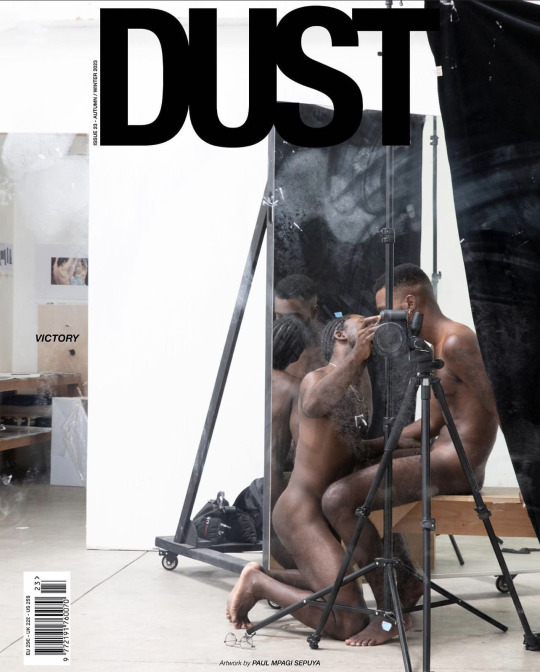#dusted magazine
Text
Butthole Surfers — Rembrandt Pussyhorse (Matador)

Photo by Jerry Milton
Given the amount of ink spilled and pixels configured concerning the music and cultural phenomena associated with the Butthole Surfers, it seems a daunting task to find anything new to say about the band — even about a record as excellent as Rembrandt Pussyhorse, first released 38 years ago (say what) on Touch and Go and presently being given the vinyl reissue treatment by Matador. But two things obviate the perceived difficulty registered just above: somehow, someway, Rembrandt Pussyhorse sounds like it could have come out yesterday on some currently über-hip, punk-adjacent underground label (say, Feel It Records from Cincinnati, or London’s La Vida Es un Mus); and for certain, it feels a very particular, vividly upsetting sort of way to listen to these demented, raging and inspired songs in March of 2024, as we struggle and lurch our way toward spring.
For example: Give “Strangers Die Everyday” a spin and try not to think about Gaza. That shouldn’t be a compelling match, of past music with present, all-too-real event. The song features a nigh-histrionic, Bela-Lugosi-as-the-Count organ, plastic fangs chewing on cheap, drywall scenery. Gibby Haynes does some of his bullhorn-mediated vocal antics, and sounds of bad plumbing bubble up into the mix. It’s the Butts in nightmare mode, which was always a vertiginous blend of ruthless ugliness and brain-rattled hilarity, and there is nothing funny about Gaza. Nothing at all. But keep listening. “Strangers Die Everyday” ends up expressing a deranged pathos. The organ is hammy, but the melody is mournful. The glurping, glooping bubbling evokes looking down a mostly stopped-up drain, which is always a bum-out experience, woven into the textures of the “Everyday” world nodded to in the song’s title. It situates the sadness and disgust in a feeling tone. But just exactly where is your everyday world? If you can tune in and make an additional metaphorical leap (to all the drains in Gaza, and in Myanmar, and in Ethiopia, and elsewhere, all of them backed up and drowned by unstanched cataracts of blood, from the bodies of all of those strangers), you will feel a particular sort of weight in your gut.
The Butts’ best stuff always worked the spaces in which earnestness, nausea and a decidedly bonkers mirthfulness overlap. Perhaps “collide” is a better word for the music’s resulting dynamic. In their early recordings, you can hear them bashing and stumbling their way toward ever-more-effective smash-ups of sharply opposing affects: the delirious one-two punch of “Suicide” and “The Revenge of Anus Presley” from Butthole Surfers (1983); the ebullient, anxious, headlong hallucination that is “Dum Dum” from …Another Man’s Sac (1984). The best performance of that sort of collision on Rembrandt Pussyhorse is “Perry,” which initially registers as a hyperbolic parody of the theme music to Perry Mason. Natch, let the laffs commence. The organ is back, but this time it’s in full Phantom-of-the-Opera mode, rollicking and tempestuous, Lon Chaney grinning horribly. Haynes delivers the laffs, howling and whooping himself breathless.
Keep listening. “Perry” takes its turn toward something more than parodic goofiness when Haynes provides a series of anaphoric itineraries: “It’s about coming of age / It’s about learning how to do it / It’s about learning how to experience things the way they ought to be experienced….” And so on. It’s a reckless thing, following Haynes into that improvisatory philosophical space: How, precisely, should things be experienced? What would a Butthole Surfer say? “It’s talking about being the slave boy / It’s talking about giving head when you’re 6 years old / It’s talking about enjoying these things….” You can just about see Raymond Burr blanch, even in black and white — and sure, it’s the Butts being the Butts, invoking a series of transgressive, taboo images, perhaps only for the charge of the transgression itself.
But there are other ways to hear the transgression. We might take the reference to Perry Mason a little more seriously. In the summer of 1986, just months after Rembrandt Pussyhorse was released, the Meese Commission on Pornography published its final report, a Puritanical screed that sought to throw the full moral weight of the Justice Department (yeah, yeah, I know) behind a juridical condemnation and potential outlawing of sex work, porn consumption and kink. The most liberal — in the hard sense of that word — readings of the Report’s recommendations would likely sanction tossing a band called the Butthole Surfers and songs like “Perry” (and “Lady Sniff,” “The Shah Sleeps in Lee Harvey’s Grave,” “Moving to Florida,” and later just about every song on Locust Abortion Technician and Hairway to Steven…) onto the pile with all the copies of Hustler and Torso and the endless numbers of VCAvideocassettes — not to mention the models and actors themselves, and all the folks who watched them and looked at them and felt pleasure.
It's not a hard history to uncover when you listen closely. Reagan’s reinvigoration of the American Right in part drew upon Jerry Falwell’s political turn, and the idea that evangelicals could have real power if they participated in the electorate, rather than regarding it as the fallen domain of a lesser law. In 2024, the Republican Party takes that evangelical vote for granted, and its full complicity with the array of MAGA-affiliated constituencies has created a new set of political alliances, issuing in events like January 6 and the Q Shaman leading a prayer service in the evacuated Senate chamber. Not sure even Haynes could conjure that image. Return to the record. The echoes of Raymond Burr’s voice, in full closing-statement declamation, reverberate out from “Perry” to the Butts’ magisterial cover of “American Woman”: “All right, you little creep, come out of there! We know your name!” We’ve got you surrounded! Where’s Mike Pence?
No one would argue that the Butts possessed anything like socio-political prescience when they recorded Rembrandt Pussyhorse. They were too busy experiencing things the way they had to experience them, to make the music that they had to make. And some of us enjoyed it. Still do. That may be reason enough to return to the record — or to reissue it. But the band somehow tapped into some very serious energies circulating in the mid-1980s: the Reagan Administration’s bloody-minded Christian nationalism (read some of his speeches, you’ll hear it); the Israeli Labor Party’s “Iron Fist” policy of 1985 and the accompanying intensification of settler activity, all of which would soon lead to the First Intifada. And here we are: Gaza on fire and self-identified Christian Nationalists like MTG and Tommy Tuberville setting policy. Here we are, in the “Whirling Hall of Knives” Haynes and Paul Leary and the rest of the band set in motion in 1986. Even today, especially today, it cuts deep. It draws blood. Strangers die everyday.
Jonathan Shaw
28 notes
·
View notes
Audio
Listen/purchase: For the Fallen Dawn by Joseph Allred
#bandcamp#joseph allred#for the fallen dawn#stringed instruments#music#island house#jim marks#album review#dusted magazine#cassette#lute#nylon-string guitar#finger picked guitar#improvisation
7 notes
·
View notes
Text
Ultrabonus on Dusted Magazine!
https://dustedmagazine.tumblr.com/post/712697042339872768/dust-volume-9-number-3
Recorded a lifetime ago (well, in 2020, same difference) and released this past December, the unprocessed immediacy of El Gimnasio en Casa bears no left-in-the-can staleness. Berlin-based, multi-national four-piece Ultrabonus offers brief, melodic garage-punk tunes delivered with crisp, swaggery style by Argentina native Ignatz B. The title charmingly translates to “the home gym,” and the sunny lo-fi psychedelia is appropriately threaded through with calisthenic noodling. Nothing groundbreaking here, but Ultrabonus does what it does very well. Fun, cool stuff.
Margaret Welsh
0 notes
Text
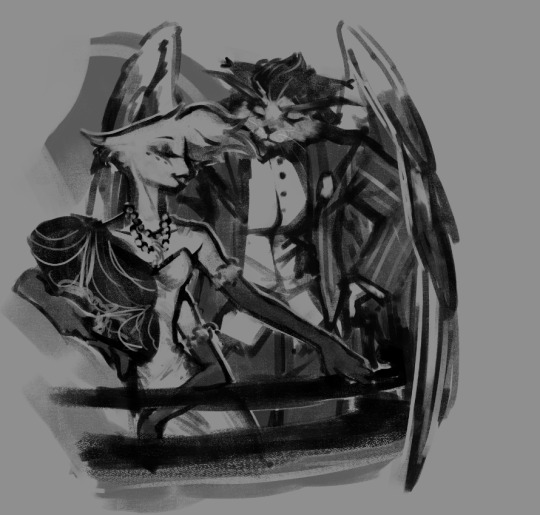
quick sketch of these 2 from @celestialalpacaron's delightful overlord au
wip but i dont trust myself to finish stuff and i like the sketch well enough so <3
#hazbin hotel#huskerdust#angel dust#husker#husk#also a study of leyendeckers feb 1908 success magazine cover lol#i love leyendecker sm i could eat that shit up anyday#ive not drawn a cat man b4 you'll have to excuse it if it looks a bit. funky.#husk's arm is SO off lmaoooo#actually. all of husk is off pls dont look at him just focus on angel he's looking very pretty tonite#.ctf
2K notes
·
View notes
Photo

SPITTING IMAGE “Full Sun” LP out digitally March third with LP and cassette to follow soon after. “Full Sun” just reviewed at Dusted Magazine.
Pre-order on your chosen hand-held format!
#spitting image#spittingimage#spittingimagereno#spittingimageband#slovenly recordings#slovenlyrecordings#Dusted Magazine#record review#full sun lp#records#new releases
0 notes
Text
Hugo Pascual photographed by Alessio Sarao





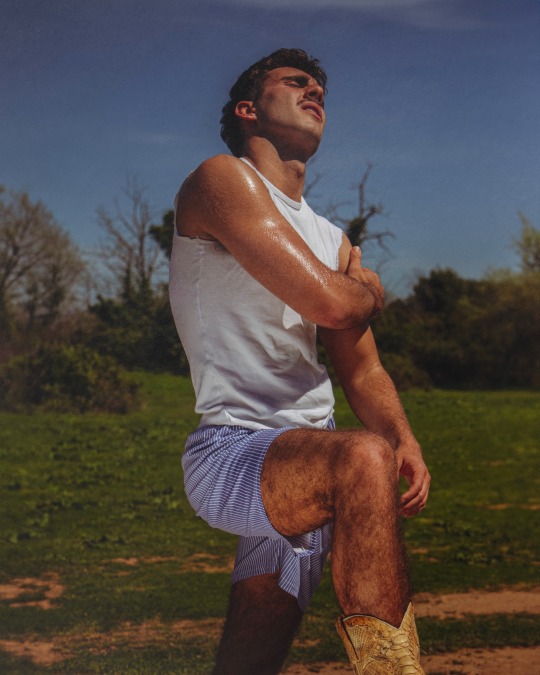


#hugo pascual#alessio sarao#magazine#male model#mensfashion#it boy#fashion model#gayhot#gay men#menswear#sexy photography#itboytrends#photoshoot#gay teen#gay kiss#gay magazine#gayguy#gayboy#editorial#mood magazine#yummy magazine#dust magazine#xy magazine#numero magazine#faguette#itboy#calvin klein boys#twink boys#diesel boy#cute boys
148 notes
·
View notes
Text
Vince Clarke — Songs of Silence (Mute)

Photo by Eugene Richards
Vince Clarke has certainly been in some storied synth bands. He wrote “Just Can’t Get Enough” (and eight other songs) for Depeche Mode’s 1981 debut, Speak & Spell, before leaving that band over creative differences. From there, he headed to Yazoo with Alison Moyet and The Assembly with Eric Radcliffe, and finally to the boppiest, poppiest synth outfit of them all, Erasure, where he played stoically as all manner of frivolity unfolded around him. If you grew up in the 1980s or 1990s and watched any MTV at all, Clarke’s songs are burned into your cortex, and quite possibly unwelcomely, but there’s no denying he was in the thick of a certain kind of dance-y, celebratory, machine-age pop.
The critical thing to understand is that Songs of Silence is nothing at all like that.
This brooding, looming suite of songs was recorded during COVID and reflects Clarke’s sorrow and isolation as friends fell ill. He channels a haunted vibe through modular synth, building each track around a single sustained tone that runs from beginning to end. Lots of things happen around those tones, fluttery arpeggios, slashes of stringed instruments, even, in one instance, a sepulchral folk tune about a “black legged miner.” Still, these tunes are constructed around static, meditational sonic atmospheres that fluctuate in volume and timbre but do not fundamentally change. There’s a sense of the eternal in them, even when as in “Scarper” they twitch into propulsion with percolating electronic rhythms.
Consider the opening “Cathedral” with its crescendoing drones, its altered, inhuman voice sounds, its cavernous sonic space. It unfolds in one long blast of sound after another, a rumbling fog horn, a tremulous string vibration, an unearthly space voyaging organ. You can’t really participate. There’s no melody to hum, no rhythm to tap, and so the best way to experience it is through stillness. You allow it to surround you, to envelop you, to subsume you, like a mystical experience.
These cuts are mostly solitary endeavors, but Clarke invites in a few collaborators to fill out his visions. Caroline Shaw’s pristine soprano arcs through interleaved shimmers of synthesized tones in “Passage,” sounding like the dream of a dream of a dream of an angel. Cellist Reed Hays scrawls a wild, passionate signature over the hushed immanence of “The Lamentations of Jeremiah.” Warmth and anguish flare from his instrument, spilling something baroque and organic into Clarke’s ominous atmospheres.
The disc’s most affecting cut is its oddest. “Blackleg Miner” sets a old labor protest song in a desolate post-industrial landscape. The air hums and trembles around the song’s brutal simplicity, surging to obscure it, at intervals, with sounds like bells shivering in sympathetic vibration. It’s a folk song launched into deep space, hurting through black voids, carrying a faint futile message about what it meant to be human.
Jennifer Kelly
#vince clarke#songs of silence#mute#jennifer kelly#modular synth#albumreview#dusted magazine#depeche mode#erasure#caroline shaw#reed hays
38 notes
·
View notes
Text
Listening Post: Kim Gordon

Kim Gordon has long been one of rock’s female icons, one of a tiny handful of women to get much play in Michael Azzerad’s underground-defining Our Band Could Be Your Life and a mainstay in the noise-rock monolith Sonic Youth. It’s hard to imagine that quintessential dude rock band without Gordon in front, dwarfed by her bass or spitting tranced out, pissed off verses over the storm of feedback.
Yet Gordon’s trajectory has been, if anything, even more fascinating since Sonic Youth’s demise in 2011. A visual artist first — she studied art at the Otis College of Art and Design before joining the band — she continues to paint and sculpt and create. She’s had solo art shows at established galleries in London and New York, most recently at the 303 Gallery in New York City. A veteran of indie films including Gus van Zant’s Last Days and Todd Haynes I’m Not There, she has also continued to act sporadically, appearing in the HBO series Girls and on an episode of Portlandia. Her memoir, Girl in a Band, came out in 2015.
But Gordon has remained surprisingly entrenched in indie music over the last decade. Many critics, including a few at Dusted, consider her Body Head, collaboration with Bill Nace the best of the post-Sonic Youth musical projects. The ensemble has now produced two EPs and three full-lengths. Gordon has also released two solo albums, which push her iconic voice into noisier, more hip hop influenced directions. We’re centering this listening post around The Collective, Gordon’s second and more recent solo effort, which comes out on Matador on March 8th, but we’ll likely also be talking about her other projects as well.
Intro by Jennifer Kelly
Jennifer Kelly: I missed No Home in 2019, so I was somewhat surprised by The Collective’s abrasive, beat-driven sound though I guess you could make connections to Sonic Youth’s Cypress Hill collaboration?
youtube
The more I listen to it, though, the more it makes sense to me. I’ve always liked the way Gordon plays with gender stereotypes, and “I’m a Man” certainly follows that trajectory. What are you guys hearing in The Collective?
Jonathan Shaw: I have only listened through the entire record once, but I am also struck by its intensities. Sort of silly to be surprised by that, given so many of the places she has taken us in the past: noisy, dangerous, dark. But there's an undercurrent of violence to these sounds that couples onto the more confrontational invocations and dramatizations of sex. It's a strong set of gestures. I like the record quite a bit.
Bill Meyer: I'm one of those who hold Body/Head to be the best effort of the post-Sonic Youth projects, but I'll also say that it's very much a band that creates a context for Gordon to do something great, not a solo effort. I was not so taken with No Home, which I played halfway through once upon its release and did not return to until we agreed to have this discussion. I've played both albums through once now, and my first impression is that No Home feels scattered in a classic post-band-breakup project fashion — “let's do a bit of this and that and see what sticks.” The Collective feels much more cohesive sonically, in a purposeful, “I'm going to do THIS” kind of way.
Jonathan Shaw: RE Jennifer's comment about “I'm a Man”: Agreed. The sonics are very noise-adjacent, reminding me of what the Body has been up to lately, or deeper underground acts like 8 Hour Animal or Kontravoid's less dancy stuff. Those acts skew masculine (though the Body has taken pains recently to problematize the semiotics of those photos of them with lots of guns and big dogs...). Gordon's voice and lyrics make things so much more explicit without ever tipping over into the didactic. And somehow her energy is in tune with the abrasive textures of the music, but still activates an ironic distance from it. In the next song, “Trophies,” I love it when she asks, “Will you go bowling with me?” The sexed-up antics that follow are simultaneously compelling and sort of funny. Rarely has bowling felt so eroticized.
Jennifer Kelly: I got interested in the beats and did a YouTube dive on some of the other music that Justin Raisen has been involved with. He's in an interesting place, working for hip hop artists (Lil Yachty, Drake), pop stars (Charli XCX) and punk or at least punk adjacent artists (Yeah Yeah Yeahs, Viagra Boys), but nothing I've found is as raw and walloping as these cuts.
“The Candy House” is apparently inspired by Jennifer Egan's The Candy House, which is about a technology that enables people to share memories... Gordon is pretty interested in phones and communications tech and how that's changing art and human interaction.
Andrew Forell: My immediate reaction to the beats was oh, The Bug and JK Flesh, in particular the MachineEPs by the former and Sewer Bait by the latter. Unsurprisingly, as Jonathan says, she sounds right at home within that kind of dirty noise but is never subsumed by it
Jennifer Kelly: I don't have a deep reference pool in electronics, but it reminded me of Shackleton and some of the first wave dub steppers. Also, a certain kind of late 1990s/early aughts underground hip hop like Cannibal Ox and Dalek.
Bryon Hayes: Yeah, I hear some Dalek in there, too. Also, the first Death Grips mixtape, Ex-Military.
It's funny, I saw the track title “I'm a Man,” and my mind immediately went to Bo Diddley for some reason, I should have known that Kim would flip the script, and do it in such a humorous way. I love how she sends up both the macho country-lovin’ bros and the sensitive metrosexual guys. It's brilliant!
This has me thinking about “Kool Thing”, and how Chuck D acts as the ‘hype man’ to Kim Gordon in that song. I'm pretty sure that was unusual for hip hop at the time. Kim's got a long history of messing with gender stereotypes.
youtube
Bill Meyer: Gordon did a couple videos for this record, and she starred her daughter Coco in both of them. The one for “I'm A Man” teases out elements of gender fluidity, how that might be expressed through clothing, and different kinds of watching. I found the video for “Bye Bye” more interesting. All the merchandise that's listed in the video turns out to be a survival kit, one that I imagine that Gordon would know that she has to have to get by. The protagonist of the video doesn't know that, and their unspoken moment in a car before Coco runs again was poignant in a way that I don't associate with her work. And of messing with hip hop!
youtube
Tim Clarke: “Bye Bye” feels like a companion to The Fall’s “Dr Buck’s Letter.”
youtube
Bill Meyer: From The Unutterable? I'll have to a-b them.
Tim Clarke: That’s the one.
Jonathan Shaw: All of these comments make me think of the record’s title, and the repeated line in “The Candy House”: “I want to join the collective.” Which one? The phone on the record’s cover nods toward our various digital collectives — spaces for communication and expression, and spaces for commerce, all of which seem to be harder and harder to tell apart. A candy house, indeed. Why is it pink? Does she have a feminine collective in mind? A feminine collective unconscious? The various voices and lyric modes on the record suggest that's a possibility. For certain women, and for certain men working hard to understand women, Gordon has been a key member of that collective for decades.
Jennifer Kelly: The title is also the title of a painting from her last show in New York.

The holes are cell phone sized.
You can read about the show here, but here's a representative quote: “The iPhone promises freedom, and control over communication,” she says. “It’s an outlet of self-expression, and an escape and a distraction from the bigger picture of what’s going on in the world. It’s also useful for making paintings.”
Gordon is a woman, and a woman over 70 at that — by any measure an underrepresented perspective in popular culture. However, I’d caution against reading The Collective solely as a feminist statement. “I'm a Man,” for instance, is told from the perspective of an incel male, an act of storytelling and empathy not propaganda. My sense is that Gordon is pretty sick of being asked, “What's it like to be a girl in a band?” (per “Sacred Trickster”) and would like, maybe, to be considered as an artist.
It's partly a generational thing. I'm a little younger than she is, but we both grew up in the patriarchy and mostly encountered gender as an external restriction.
As an aside, one of my proudest moments was when Lucas Jensen interviewed me about what it was like to be a freelance music writer, anonymously, and Robert Christgau wrote an elaborate critique of the piece that absolutely assumed I was a guy. If you're not on a date or getting married or booking reproductive care, whose business is it what gender you are?
There, that's a can of worms, isn't it?
Jonathan Shaw: Feminine isn't feminist. I haven't listened nearly closely enough to the record to hazard an opinion about that. More important, it seems to me the masculine must be in the feminine unconsciousness, and the other way around, too. Precisely because femininity has been used as a political weapon, it needs imagining in artistic spaces. Guess I also think those terms more discursively than otherwise: there are male authors who have demonstrated enormous facility with representing femininity. James, Joyce, Kleist, and so on. Gordon has always spoken and sung in ways that transcend a second-wave sort of feminine essence. “Shaking Hell,” “PCH,” the way she sings “I Wanna Be Your Dog.”
youtube
Jennifer Kelly: Sure, she has always been shape-shifter artistically.
The lyrics are super interesting, but almost obliterated by noise. I’m seeing a connection to our hyperconnected digital society where everything is said but it’s hard to listen and focus.
Bill Meyer: Concrete guy that I am, I’ve found myself wishing I had a lyric sheet even though her voice is typically the loudest instrument in the mix.
Andrew Forell: Yes, that sense of being subsumed in the white noise of (dis)information and opinion feels like the utopian ideal of democratizing access has become a cause and conduit of alienation in which the notion of authentic voices has been rendered moot. It feels integral to the album as a metaphor
Christian Carey: How much of the blurring of vocals (good lyrics — mind you) might involve Kim’s personal biography, I wonder? From her memoirs, we know how much she wished for a deflection of a number of things, most having to do with Thurston and the disbandment of SY.
Thurston was interviewed recently and said that he felt SY would regroup and be able to be professional about things. He remarked that it better be soon: SY at eighty wouldn’t be a good look!
Andrew Forell: And therein lies something essential about why that could never happen
Ian Mathers: I know I’m far in the minority here (and elsewhere) because I’ve just never found Sonic Youth that compelling, despite several attempts over the years to give them another chance. And for specifically finding Thurston Moore to be an annoying vocal presence (long before I knew anything about his personal life, for what it's worth). So, I’m in no hurry to see them reunite, although I do think it would be both funny and good if everyone except Moore got back together.
Having not kept up with Gordon much post-SY beyond reading and enjoying her book, I wasn’t sure what to expect from this record. After a couple of listens, I’m almost surprised how much I like it. Even though I’m lukewarm on SY’s music, she’s always been a commanding vocal presence and lyricist and that hasn’t changed here (I can echo all the praise for “I’m a Man,” and also “I was supposed to save you/but you got a job” is so bathetically funny) and I like the noisier, thornier backing she has here. I also think the parts where the record gets a bit more sparse (“Shelf Warmer”) or diffuse (“Psychic Orgasm”) still work. I've enjoyed seeing all the comparisons here, none of which I thought of myself and all of which makes sense to me. But the record that popped into my head as I listened was Dead Rider’s Chills on Glass. Similar beat focus, “thick”/distorted/noisy/smeared production, declamatory vocals. I like that record a lot, so it's not too surprising I'm digging this one.
youtube
Jennifer Kelly: I loved Sonic Youth but have zero appetite for the kind of nostalgia trip, just the hits reunion tour that getting back together would entail.
Jonathan Shaw: Yeah, no thanks to that.
RE Christian's comment: Not sure I see deflection so much as the impossibility of integration. We are all many, many selves, always have been. Digital communications interfaces and social media have just lifted it to another level of experience. Gordon sez, “I don't miss my mind.” Not so much a question of missing it in the emotional/longing sense, more so acknowledging that phrases like “my mind” have always been meaningless. Now we partition experience and identity into all of these different places, and we sign those pieces of ourselves over, to Zuck and the algorithms. We know it. We do it anyways, because it's the candy house, full of sweets and pleasures that aren't so good for us, but are really hard to resist. “Come on, sweets, take my hand...”
Bill Meyer: I would not mind hearing all of those SY songs I like again, can’t lie, although I don’t think that I’d spend Love Earth Tour prices to hear them. But given the water that has passed under the bridge personally, and the length of time since anyone in the band has collaborated creatively (as opposed to managing the ongoing business of Sonic Youth, which seems to be going pretty well), a SY reunion could only be a professionally presented piece of entertainment made by people who have agreed to put aside their personal differences and pause their artistic advancement in order to make some coin. There may be good reasons to prioritize finances. Maybe Thurston and/or Kim wants to make sure that they don’t show up on Coco’s front door, demanding to move their record or art collection into her basement, in their dotage. And Lee’s a man in his late 60s with progeny who are of an age to likely have substantial student loan debt. But The Community is just the kind of thing they’d have to pause. It feels like the work of someone who is still curious, questioning, commenting. It's not just trying to do the right commercial thing.
Justin Cober-Lake: I’m finding this one to be a sort of statement album. I’d stop short of calling it a concept album, but there seems to be a thematic center. I think a key element of the album is the way that it looks for... if not signal and noise, at least a sense of order and comprehensibility in a chaotic world. Gordon isn’t even passing judgment on the world — phones are bad, phones are good, phones make art, etc. But there’s a sense that our world is increasingly brutal, and we hear that not just in the guitars, but in the beats, and the production. “BYE BYE” really introduces the concept. Gordon’s leaving (and we can imagine this is autobiographical), but she’s organizing everything she needs for a new life. “Cigarettes for Keller” is a heartbreaking line, but she moves on, everything that makes up a life neatly ordered next to each other, iBook and medications in the same line. It reminds me of a Hemingway character locking into the moment to find some semblance of control in the chaos.
Getting back to gender, there’s a funny line at the end: one of the last things she packs is a vibrator. I'm not sure if we're to read this as a joke, a comment on the necessity of sexuality in a life full of transitory moments, as a foreshadowing of the concepts we’ve discussed, or something else. The next item (if it’s something different) is a teaser, which could be a hair care product or something sexual (playing off — or with — the vibrator). Everything's called into question: the seriousness of the track, the gender/sexuality ideas, what really matters in life. Modern gadgets, life-sustaining medicines, and sex toys all get equal rank. That tension really adds force to the song.
Coming out of “BYE BYE,” it's easy to see a disordered world that sounds extremely noisy, but still has elements we can comprehend within the noise. I don’t want to read the album reductively and I don't think it's all about this idea, but it's something that, early on in my listening, I find to be a compelling aspect of it.
youtube
#dusted magazine#listeningpost#kim gordon#the collective#jennifer kelly#jonathan shaw#bill meyer#andrew forell#bryon hayes#tim clarke#christian carey#ian mathers#justin cober-lake
20 notes
·
View notes
Text
Brìghde Chaimbeul — Carry Them With Us (tak:til)

youtube
First of all, for any interested non-Gaelic speakers, the young Scottish piper’s name is (per her own site) pronounced “Bree-chu CHaym-bul.” And secondly, while the music found on this, her third album, sounds like what most would identify as bagpipes, it’s… well it is and it isn’t. To the extent that bagpipes are known to the wider world it’s something like the great Highland bagpipe (musician blowing into a reed, pipes extending over shoulder). Chaimbeul can certainly play that too, but she specializes more in the Scottish smallpipes, a bellow-driven instrument of more recent vintage (the 80s!) albeit from a lineage going back hundreds of years. The details are worth noting up front, because the music on Carry Them With Us is so viscerally enchanting it might be hard to keep track of them once you’re mid-listen.
Both varieties of bagpipe share some seemingly contradictory qualities. Drone instruments that (due to the various chanters used and other aspects of their design) can handle complex, fast-moving melodies; intensely analogue devices that, due to their precision and lack of sonic decay, can feel almost electronic in nature. Capable of simultaneously evoking melancholy and spritely joy, one on its own, played well, can fill a whole room with sound almost to the point of oppression. Unsurprisingly for a musician who’s been winning awards since she was a teen, Chaimbeul is an exceptional player of the smallpipes and from the opening blast of “Pililiù: The Call of the Redshank” these 35 minutes practically put on a clinic on why any listener might want to get to know them.
Not that Chaimbeul is strictly solo; after Canadian saxophone dynamo Colin Stetson reached out to her about a documentary soundtrack, the two of them wound of working together on six of the nine tracks here. If you’ve never previously considered the way sax and bagpipe might sound like each other, or take on similar roles, or complement each other, their completely natural fit here might take you aback. Stetson fans are well aware of the head of steam he can build up, but Chaimbeul’s no slouch either; a track like “Tha Fonn Gun Bhi Trom: I Am Disposed of Mirth” already feels delirious before you notice Stetson’s whirling flutters unspooling in the background. Even when their roles diverge more, like the impossible to miss saxophone tessellations towards the end of “’S Mi Gabhail an Rathaid: I Take the Road,” they feel like kindred spirits.
The most notable element aside from Chaimbeul’s pipes and Stetson’s sax is her voice, singing in Gaelic. It only shows up a few times but it’s an arresting presence whenever it does. Maybe if you speak the language it turns out she’s singing about something more mundane, but based on the song titles here and the incantatory, almost vatic feeling those passages bring to the rest of the music it’s hard not to feel like there’s something of deep significance being passed on. Like the rest of Carry Them With Us, it's intensely striking.
Ian Mathers
#Brìghde Chaimbeul#Carry Them With Us#tak:til#ian mathers#albumreview#dusted magazine#smallpipes#drone#folk#saxophone#colin stetson#gaelic
55 notes
·
View notes
Text
Geordie Walker, 1958-2023
youtube
Geordie Walker played guitar, most memorably for Killing Joke throughout that band’s long and productive career; with Jaz Coleman, Walker was Killing Joke’s only permanent member. He died yesterday. For some listeners, nothing quite compares with the thrill of hearing that opening minute of “The Wait,” which transformed some of those same listeners’ ears in the early 1980s. Other players (Steve Albini, Justin Broadrick) may be hipper to talk about, but Walker’s icy, industrial tone and his ear for the riff that was simultaneously danceable and dirgey have proven hugely influential.
Put on that self-titled Killing Joke album today (I did, it still sounds great) and you’ll hear so, so much of the 1980s underground: Big Black, Head of David, Ministry, Helmet. It’s all in there, most of it in Walker’s guitar.
Jonathan Shaw
50 notes
·
View notes
Text
Slept Ons: 2023

Reverend Kristin Michael Hayter
If you write for Dusted, you listen to music all the time and you try, at least within your general area of interest, to stay current with what’s current. Ask any of our significant others, and they’ll say we listen to too much music, to which we inevitably reply “What’s that, this ‘too much’ you speak of?” We listen to music while we’re eating, while we’re working, while we’re exercising, while we’re driving from one place to another, even while we’re brushing our teeth sometimes; though, admittedly, the sound quality is not that great in the bathroom.
Even so, we miss things. Here, in what has become an annual tradition, we revisit some of the albums that slipped away in one fashion or another, the ones that we kept putting off until it was too late, the ones we somehow didn’t catch wind of until well into January, the ones we discovered tardily on other people’s lists and year-end podcasts and radio shows. So here are our late finds, a favorite or two each that we never got the chance to write about. Fortunately, unlike bread and fresh fruit and bunches of cilantro, albums don’t go bad if you let them sit for a while.
Die Enttäuschung und Alexander Von Schlippenbach — Monk’s Casino Live At Au Topsi Pohl (Two Nineteen)
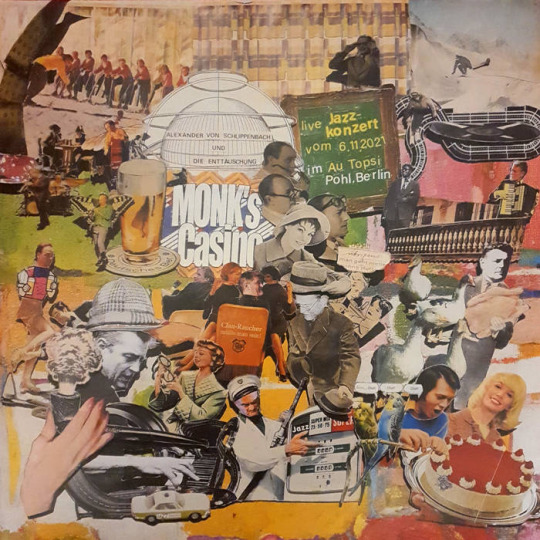
This record wasn’t so much slept on as patiently sleuthed. Die Enttäuschung, the long-running German quartet (their name translates as The Disappointment, an appellation that says more about their sense of humor than the quality of their ever-buoyant reimagining of bebop and early free jazz) started selling it at gigs in the spring of 2023. I bided my time, and when I made it to Berlin last fall, scoring a copy was on my agenda. To this day, the record and the internet are near strangers; while you can buy it from Bandcamp, there’s no download, streaming or videos. So, you’ll have to just take it from me that Die Enttäuschung’s reunion with now-octogenarian pianist Alexander von Schlippenbach will take wrinkles off your brow. The first time that these musicians recorded together as Monk’s Casino, back in 2005, they performed every one of Thelonious Monk’s compositions over three CDs; pith was essential. The repertoire hasn’t changed this time, but the approach is looser. Crammed into the intimate confines of the now-shuttered Au Topsi Pohl just as Omicron started ruining parties, the five musicians goose the tempos, spike the solos with impertinence, and veer around Monk’s sharp angles with a combination of intimate familiarity and belt-busting abandon.
Bill Meyer
Reverend Kristin Michael Hayter — SAVED! (Perpetual Flame Ministries)
Not slept on so much as avoided— and why, at this point I am not entirely sure. When I saw Kristin Hayter perform under her previous Lingua Ignota moniker back in December of 2022, she opened with a set of devotional songs on piano, a variety of metallic objects set and chains draped across the instrument’s interior string works. It was extraordinary, and SAVED! features the same basic set of raw, austere elements: that prepared piano, Hayter’s remarkable voice and the problematics of faith. The avoidance may stem from my own fraught relations to the sort of grim Protestantism Hayter reimagines; I spend some time around fire-and-brimstone Baptism as a child, and it left a mark on me. She wove some of that language and those textures into the excellent Lingua Ignota record Sinner Get Ready, but there they were much more symbolic, and largely couched in specific fundamentalisms (Amish and Mennonite) that distanced them somewhat. The sounds and spiritual gestures on SAVED! are a good deal more familiar to me, and they haunt. Likely the haunting is the point. Certainly “All of My Friends Are Going to Hell” and “I Know His Blood Can Make Me Whole” smolder and then burn with varieties of hellfire I have smelled before. One can also hear those songs more metaphorically, and “I Will Be with You Always” (the best thing on the record) is replete with images and intensities that call to multiple levels of meaning, simultaneously and sublimely. SAVED! is a hard record for me to listen to, and that’s why I have come, somewhat belatedly, to prize it so highly.
Jonathan Shaw
Illusion of Safety — Pastoral (Korm Plastics)
Daniel Burke has been carefully and consistently nurturing his Illusion of Safety project for 40 years, and I’ve been embarrassingly ignorant of the output until now. Burke released multiple audio artifacts in 2023, including a 40th anniversary ten-cassette box set, so choosing a single album to write about for the Slept On column was a daunting undertaking. Pastoral is unique in that it shows off a more delicate and expansive side of the Illusion of Safety oeuvre. It’s also one of the few music-focused objects that the stalwart Korm Plastics label has released in years; the imprint focuses on the written word these days. Sonically, Burke has established a series of vignettes that follow a similar pattern. The music flows from short, sharp attacks into lengthy sustained quietude. Burke unleashes his jarring, frantic salvos both percussively and synthetically, and these brief but unsettling periods morph into slowly churning drone swarms. Given that this is just one example of Burke’s sonic vernacular, I’m excited to hear more. Thankfully, when it comes to Illusion of Safety, I’ve been a veritable Rip Van Winkle.
Bryon Hayes
Malla — Fresko (Solina)
youtube
So slept on was Malla Malmivaara’s second solo album that even the normally reliable Beehype missed it, but even if you did happen to notice its inclusion on my midyear list, overstating how well-crafted and immersive Fresko’s dance-pop tracks are is hard to do. It makes sense given she’s better known for her acting career, but Malla’s been in the Finnish music game for a long time, too — first in the short-lived mid-aughts house trio Elisabeth Underground, then as herself with 2019’s “Sabrina” single (which got a Jori Hulkkonen remix, a guy who once redid M83) that ended up paving the way for her self-titled 2021 debut full-length. Despite using similar synth arpeggios and a healthy dose of vocal reverb as she did on Malla, Fresko is a little bit darker, moodier, more down in it. Lead single “Moi” (“hi” in English) tells the tale, its perfectly crafted video full of young Rolf Ekroth models doing things like looking impossibly cool in ridiculous outfits and having fashion shows with ATVs in snowy back alley Helsinki parking lots are a perfect marriage of audio and video, images and a melody burned in my brain the moment I saw it. It is very much a dance record flush with tech-house tweaks and no grander artistic ambitions, but Malla’s barely crested 40; now that she’s pledged more time to her music career, it’s entirely possible Fresko is but a warmup for something bolder — and even if it’s not, you could do much worse than a third album full of body movers like this. Hi is right.
Patrick Masterson
Kevin Richard Martin – Black (Intercranial)
Ostensibly a eulogy to Amy Winehouse, Kevin Richard Martin’s Black is a deeply humane expression of isolation, loss and grief. Built from the ground up, the bass deep and warm, swathes of glacial arpeggiated synths and beats that hint at the club. Notes echo and ripple away to create silhouettes of solitude, a tangible manifestation of absence. Despite the deep weight of his music, Martin imbues Black with an incredible delicacy. His abstract architecture allows the mind to roam and the listener to connect with emotional truths. It’s the balance Martin finds between the particular and universal that gives Black it’s power. In the strutting bassline of “Camden Crawling” smeared with narco/alcoholic fuzz, the looming threat of “Blake’s Shadow” and the bleary saxophone in “Belgrade Meltdown” there are the faintest echoes of Winehouse’s sound which emerge from the depths of Martin’s echo chambers. A work of terrible sadness, great beauty, empathy and comfort.
Andrew Forell
Derek Monypeny — Cibola (2182 Recording Company)
Cibola eased into the world as 2022 turned into 2023, but it took me nearly a year to get to it. Monypeny is a confirmed westerner, having lived in Arizona, Oregon, and (currently) the California desert, and an awareness of both the wrongfulness and the good fortune of living in that neck of the woods infuses Cibola, which is named for one of the American southwest’s legendary cities of gold (helpful hint; if you ever encounter a conquistador looking for gold, tell them it’s somewhere else). Monypeny alternates between guitar, shahi baaja, and on electric autoharp the LP’s seven tracks, and Kevin Corcoran contributes time-stopping metal percussion to one of them. The music likewise toggles between stark evocations of space and swirling submersions into nether states. In either mode, Monypeny effectively suggests the gorgeous immensity and pitiless history of the land around him.
Bill Meyer
The Sundae Painters — S-T (Flying Nun)
One minute, The Sundae Painters are churning wild screes of noisy guitar, the next they construct airy psychedelic pop songs of a rare unstudied grace. The band is a super group of sorts — Paul Kean and Kaye Woodward of the Bats, Alex Bathgate of the Tall Dwarfs and the late Hamish Kilgour of the Clean — convening in loose-limbed, joyful mayhem in songs that glisten and shimmer and roar. “Hollow Way” roils thick, muddy textures of drone up from the bottom, the slippery bent notes of sitar (that’s Bathgate) and Woodward’s diaphanous vocals floating free of a visceral murk. “Aversion” lets unhinged guitar shards fly over the thump of grounding drums as Kilgour chants inscrutable poetry. The two HAP tracks, I and II, stretch out in locked-in, psychotropic grooves, relentless forward motion somehow dissolving into an endless ecstatic now. This full-length, sadly the only one we’ll ever have from the Sundae Painters now that Kilgour is gone, is as good as anything that its esteemed participants ever did in their more famous bands, and that’s saying a lot.
Jennifer Kelly
U SCO — Catchin’ Heat (Self Released)
Here’s the extent of what I currently know: Someone I have on Facebook posted a link to it as one of his favorite records of the year, and someone I don’t know responded that they bought a copy of the cassette before the first track even finished. U SCO are Jon Scheid (bass), Ryan Miller (guitar), and Phil Cleary (Drums) and they are from and/or based in Portland Oregon. According to Discogs and Bandcamp Catchin’ Heat is the first thing they’ve released since 2016. That’s it! I started listened to this with the same box-checking, due diligence energy I tend to have for the dozen or so records I hear about one way or another after I’ve already done my year-end writing; most of them, every year, I don’t even make it through one play (the fatigue has fully set in by this point in the process). But sure enough before the end of that first track, I knew this was going to have to be the record I slept on. It’s perfectly structured, with extra-long, absolute blowouts beginning and ending the record, the second and second-last tracks being the two shortest and the only moments of relative calm, and the middle two making up a strong core that both brings in some elements not found elsewhere on Catchin’ Heat (the vocals on “trrrem”) and is just the most straightforward version of the absolute burners U SCO can clearly summon up on command (“woe dimension”). As great and arresting as that opening track is, though, the closing “abyssal hymn” might be the real highlight here, bringing in clarinet and saxophone to add a whole new layer of skronk to what they’re cooking. I’ve listened to this record about 10 times in a couple of days, and they deserve to sell out of that run of cassettes.
Ian Mathers
#dusted magazine#yearend 2023#slept ons#Die Enttäuschung und Alexander Von Schlippenbach#bill meyer#Reverend Kristin Michael Hayter#jonathan shaw#illusion of safety#bryon hayes#malla#patrick masterson#kevin richard martin#andrew forell#derek monypeny#jennifer kelly#the sundae painters#Ian mathers#U SCO
18 notes
·
View notes
Text
Daniel Bachman—When the Roses Come Again (Three Lobed)
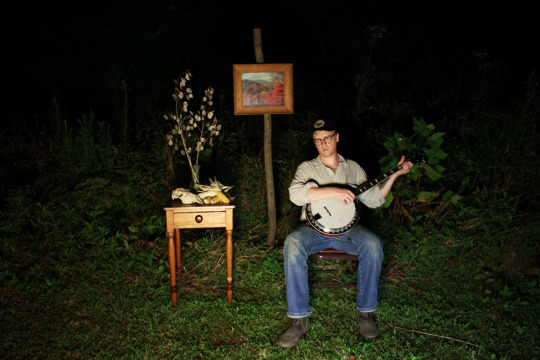
Continuing the trajectory of his releases over the past few years, Daniel Bachman moves further into the world of musique concrete, this time around combining played, found, and manipulated sounds on a laptop. Named for a Carter Family song, the words of which provide the titles for the tracks, When the Roses Come Again is a densely layered and highly detailed recording. Snatches of often heavily treated fretless banjo (sometimes with slide-like effects, as on “Till the roses come again”) and guitar share space with other sounds apparently attributable to a mouth bow (a simple one-stringed instrument for which the mouth serves as a resonator), fiddle, and samples of bells and harmonium, though these are less obvious.
The tracks are generally concise (only two exceed four minutes), but they blend together into a kind of suite. There is a satisfying balance among those that are fairly noisy, bordering on industrial (though not aggressive), such as “As I wander, I will ponder,” those that are more melodic and less dense, such as “Happy hearts that feel no pain,” and those in which the emphasis alternates between texture and melody, such as “On a summer over yonder.” Nearly always, a drone of some sort either provides the background or dominates, and the electronics or treated sounds sometimes create a rhythm, as on the closing track. The resulting blend of sweeter, more bucolic tones with shimmering and percussive electronics is initially disconcerting but comes to feel organic, like a kind of palimpsest.
It’s been fascinating to observe Bachman developing his approach to Americana from Takoma school guitar excursions to the very modern sounds featured on his recent recordings. His increasing attention to the overt symbols of roots music exemplified by his use of Carter Family material has coincided with increasing incorporation of technology and its artifacts (such as the recurring buzzes, hums, and rattles heard here). Whereas last year’s Almanac Behind used a similar approach to address the weighty, almost suffocating issue of climate change, the focus here is personal, on the cycle of death and rebirth that defines existence. This is, in other words, still serious music, yet it is not necessarily somber. Probably not coincidentally, When the Roses Come Again provides the perfect soundtrack for a drive through a land of woods, farms, and small towns dotted with Dollar General stores and cell towers.
Jim Marks
#daniel bachman#when the roses come again#three lobed#jim marks#albumreview#dusted magazine#musique concrete#banjo#guitar#takoma school#electronics#Bandcamp
21 notes
·
View notes
Text
Emily Robb — If I Am Misery Then Give Me Affection (Petty Bunco)

There’s no shortage of squall on Emily Robb’s new album, If I Am Misery Then Give Me Affection. It’s a guitar pageant! One listen and you’ll hear Charley Patton amidst the buzz, his primitive blues lurking in the cacophony. Pull those impulses forward 40 years and you’ll hear familiar sounds that take you right to the early Velvets.
Robb’s guitar hums like a pipe organ to open the record. “Hermit’s Cave” evolves from a solemn hymn into a harmonic drone, punctuated only when the amp catches its breath, then receding. But if you think her sophomore album sounds like a somber affair, you’d be sorely mistaken.
Robb rips into the familiar chug and wail she introduced on her fantastic debut album, How to Moonwalk, with “A Kiss,” soloing relentlessly over a looping riff. “Dispenser” finds her sawing the air with the guitar, growing only more frenzied as the song unravels. The centerpiece of the record, “Slowing Singing Bathing Shaving” locates Robb’s sound among the drone for which Philadelphia is so well known.
But there’s an intimacy here, too. It’s not a noise bath. It’s a deeply personal record – not in the sense that it’s telling a story that feels like a secret being shared – but that it’s just Robb and her guitar, alone together. The sound is at once austere and rich; you might overlook how the raw vulnerability of her work is what makes it so compelling. Unlike the maelstrom that is Astute Palate, there’s nowhere to hide in the mix.
That aspect reveals itself in the record’s more plaintive moments, like the meditative, “First Grow a Gold Plant,” underpinned by a throbbing chord that pulses beneath the melody. It’s countered immediately afterward by the wooly rave up “Rolling Electric Ball.” It’s just a classic wall of riffage that blankets the listener in fuzz before decaying on the runout.
What makes Emily Robb’s work so remarkable is how much is clearly left in the tank. She’s an inventive, exciting artist making fun, engaging music. If misery loves company, then consider yourself invited.
J.T. Ramsay
#emily robb#if i am misery then give me affection#petty bunco#j.t. ramsay#albumreview#dusted magazine#noise#guitar#Bandcamp
26 notes
·
View notes
Text
Music is an Essential Verb: Derek Taylor 2023

Music remains, along with family, friends, and a select few venial vices, my primary daily defense against the mental erosions of spiritual malaise and existential dread. Being a humanist also means being a realist, and little looks to be different on that score in the year ahead as we continue to careen toward a bleak and self-defeating dénouement. The veil of uncertainty around what ultimately feels like inevitability redoubles the need to remain thankful for and supportive of those who devote themselves to art. Summary capsules below describe some of the sounds that kept me going in 2023.
Peter Brötzmann, Wayne Shorter, Kidd Jordan, & Charles Gayle

“The trauma of my generation was what our fathers had done to the rest of the world, and so we said, ‘never again,’ and that was the whole impetus through all my life, and it still is.” ~ Brötzmann (2018)
Musician attrition and demise are dispiriting aspects of every annum, but the departure of four disparate octogenarian reedists exacted an especially steep emotional and cultural toll this year. Shorter and Jordan passed away in March, each of them leaving a rich legacy as indefatigable improviser and altruistic educator that continue influence and inspire. Brötzmann exited in June after the return of a protracted respiratory illness. Few if any can match the magnitude of his mileage and six-decade itinerary as an irrepressible, obstinately adventurous world traveler. Gayle ascended in September, an ardent, uncompromising eremite to the end. All four men left behind discographies and concert/interview footage that will leave the faithful and curious listening and marveling in perpetuity, but their collective absence still aches.
Kirk Knuffke & Joe McPhee Quartet + 1 – Keep the Dream Up (Fundacja Sluchaj)
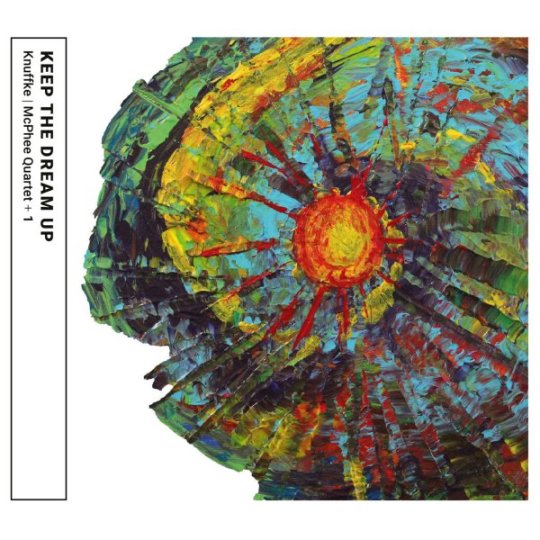
One of the manifold joys of following the output of Kirk Knuffke is anticipating who he’ll collaborate with next. The cornetist’s ears and imagination are as huge as his heart, a trait he has in common with the equally equanimous Joe McPhee. They’ve known each other for years but Keep the Dream Up is their first released collaboration and it’s an affirming alloy of their complementary creative temperaments. Longtime McPhee comrades Michael Bisio and Jay Rosen complete the quartet with bass clarinetist Christof Knoche comprising the additive on a Brooklyn studio session that captures collective creative lightning in a digital bottle. My album of the year for these reasons and more, although hopefully Joe will bring his brass to a follow-up conclave soon.
Don Byas – Classic Sessions 1944-1946 (Mosaic)
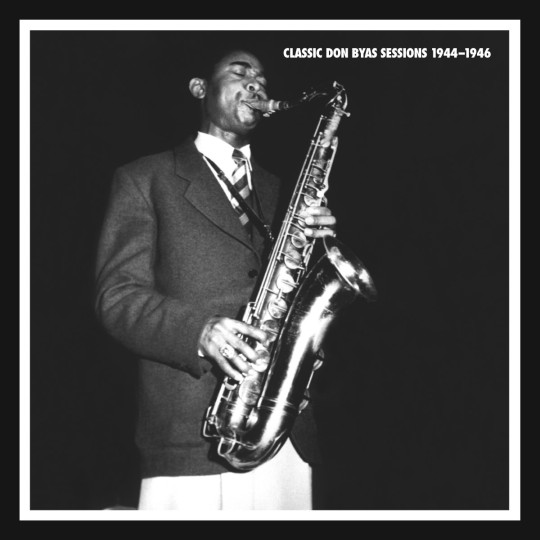
Saxophonist Don Byas recorded prolifically during the 1940s. His porous sound and popular style bridged the schools of swing and bop through prowess and panache aligned with the most esteemed of post-WII tone scientists. That sustained industriousness hasn’t reflected in reliable access to his works, primarily because they’re spread across a plethora of independent labels and competing copyrights. Leave it to Mosaic Records to rectify the longstanding reissue lacuna. This long gestating collection corrals and sequences the bulk of them across ten discs, scrubbing their sound, and adding an expansive cache of rarified verité concert recordings made in a Swedish jazz fan’s residence. Indulging in one’s Byas bias has never been easier or as edifying.
Fred Anderson – The Milwaukee Tapes Vol. 2 (Corbett vs Dempsey)
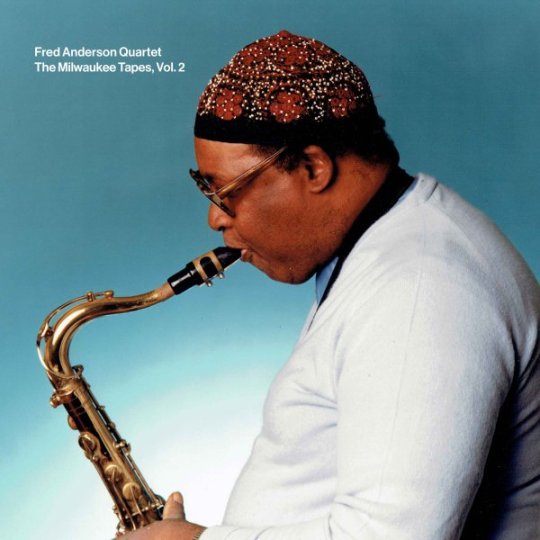
Patience and long-game aptitude are among music producer/archivist/advocate John Corbett’s virtues. This unexpected, but abundantly welcome sequel to an archival Anderson collection on Corbett’s long defunct Unheard Music Series took 23 years to secure commercial circulation and offers an additional hour-plus from the same gig in improved sound. Fellow AACMers Billy Brimfield and Hamid (nee Hank) Drake join bassist Larry Hayrod in bringing vibrant, detailed life to the Lone Prophet of the Prairie’s (as Anderson was affectionately known) serpentine, cerulean melodies. Corbett’s current label released a plenitude of music in 2023 (see also below) but the uncommon opportunity to hear more Anderson of any vintage makes this release worthy of independent mention.
Jason Adasiewicz
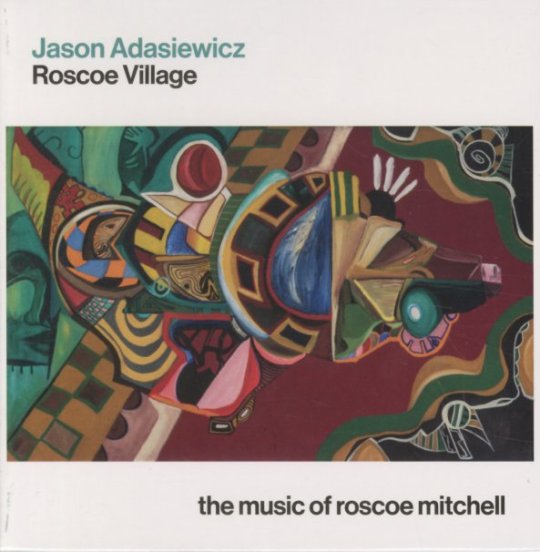
Corbett vs. Dempsey also had a welcome role in Jason Adasiewicz’s return to record with two different projects. On vinyl, Roy’s World documents a 2017 Chicago studio session by the vibraphonist’s quintet originally intended as the soundtrack to a film based on neo-noir novelist Barry Gifford’s short stories. Chicago stalwarts Josh Berman, Joshua Abrams, Hamid Drake, join saxophonist Jonathan Doyle in the ensemble for a program that sounds at once fresh and nostalgic while always vital. On CD, Roscoe’s Village dispenses with band for a solo selective foray through the songbook of Roscoe Mitchell including evocative renderings of “Congliptious” and “A Jackson in Your House” that retain the composer’s essence while striking out in bold new directions.
Natural Information Society
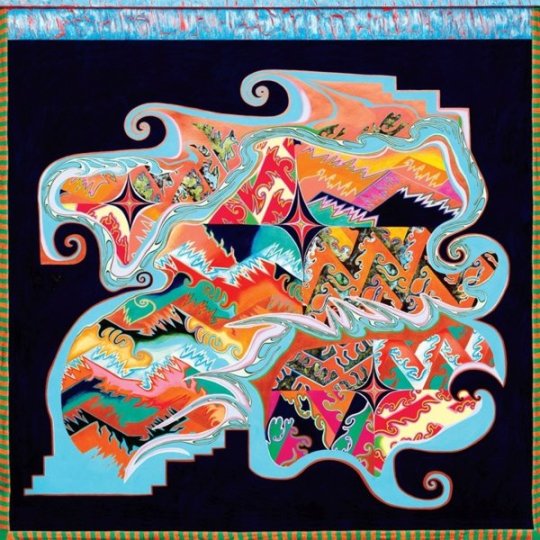
Grounded as it is in core voices of guembri, frame drum and harmonium, codification of Josh Abrams’ NIS as a jazz ensemble immediately feels reductively incomplete. All participating instruments can be active architects in the undulating, melody-laced drones that frequently form the basis of the band’s gradual, granulated improvisations. Performances are more akin to collective expeditions where a galvanizing gestalt effect is afoot; one where earned communal peaks preserve the individual power and agency of the interlocking parts. Since Time is Gravity augments this already catalytic template by incorporating a larger contingent of Chicago colleagues including tenorist Ari Brown to the equation.
Abdul Wadud
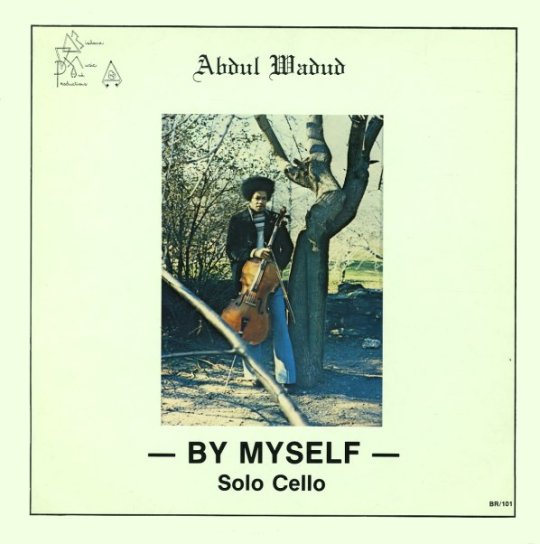
A jazz-based improviser on the cello who didn’t double on other stringed instruments, Wadud was also a consummate collaborator and sideman. Magnanimity in lending his substantial talents to the projects of others resulted in a paucity of albums under his own name. By Myself from 1977 on the Bisharra label is a revelatory anomaly on that self-effacing resume. Wadud approaches the instrument as a multifaceted sound factory, plucking, strumming, and bowing, often simultaneously, to create solo tone poems steeped in personal poignancy. Gotta Groove’s vinyl reissue is a beautiful facsimile of the original album object in faithfully reconstructed fidelity.
Marion Brown
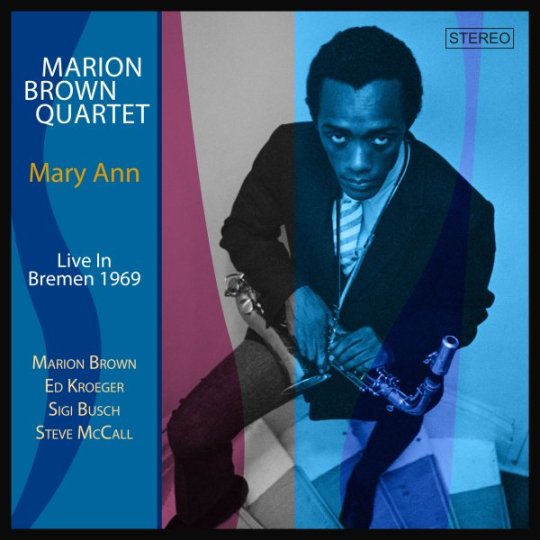
Georgia-born altoist Marion Brown had a lengthy, storied career but the body of recorded work that he left behind can present difficulties in terms of ingress to its totality. Scattered across labels, years, and circumstances, much of it is either out of print or commercially unreleased. That collective relative obscurity makes a trio of releases, two on the German Moosicus label, and a third Record Store Day viny reissue of Brown’s 1970 studio duets with Wadada Leo Smith under the shared sobriquet Creative Improvisation Ensemble even more valuable. Of the former two, Mary Ann presents concert material by Brown’s quartet from a 1969 Bremen club gig in soundboard fidelity. Gesprächsfetzen & In Sommerhausen combines two more German concert snapshots, quintet, and sextet, from 1968 & 1969 with Gunter Hampel originally released on the Calig imprint. Steve McCall is a boon on drums in all three contexts.
Art Pepper – Complete Maiden Voyage Recordings (Omnivore)
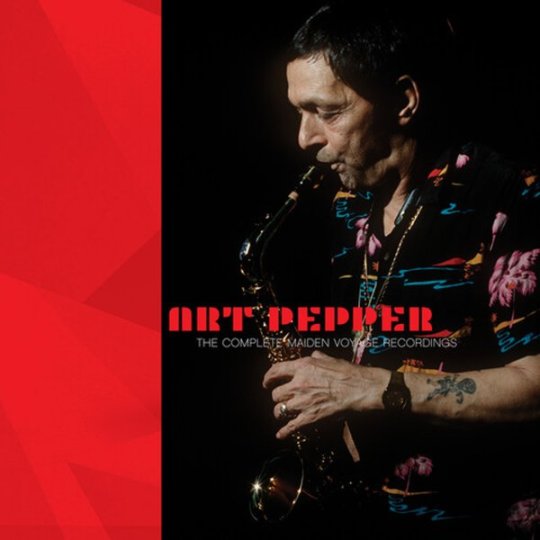
Art Pepper was an inveterate rake for most of his life, magnifying destructive interpersonal tendencies with drugs and frustratingly frequent acts of self-sabotage. That star-crossed propensity makes the fact that he left so much magnificent music even more miraculous. This lavish box is a fascinating compendium of the constantly competing artistic contradictions at his center, collecting a quartet gig across three nights and seven club sets in Pepper’s native Los Angeles, ten months prior to his premature passing at 56. Over half of the music is previously unreleased and the rhythm section, led by the impeccable and implacable pianistics of George Cables, gives Pepper a cumulative confidence boost that keeps him on the rails. None of it has ever sounded better.
Pan Afrikan People’s Arkestra

Los Angeles of the late-1970s was an unforgiving environment for the economic necessities of orchestral jazz. The Pan Afrikan People’s Arkestra, under the nominal leadership of pianist/composer/community organizer Horace Tapscott, was a tenaciously subversive force in the face of that ruinous rule. Adopting the Immanuel United Church of Christ as an informal base of operations, the large ensemble resourcefully engaged in an ambitious series of concerts in 1979. The Nimbus label, long a Tapscott exponent and repository, released the first three entries this year in an archival subscription series collecting the voluminous results. Titles are also available individually and present the pivotal band at a performative peak with star soloists Sabir Mateen, Billy Harris, Jesse Sharps, and Robert Miranda shining just as bright as their fearless foreman.
Alan Skidmore – A Supreme Love
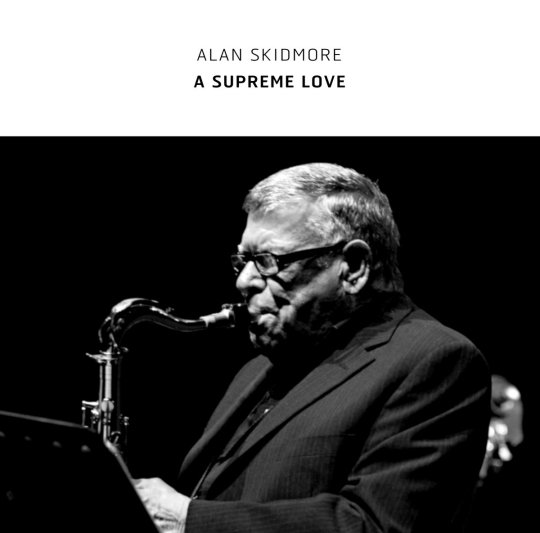
Unexpectedly issued on Mark Wastell’s Confront label, an imprint better known for its fealty to free improvisation, this six-disc archival tribute to Alan Skidmore’s 70+ year career in music launches with the saxophonist’s 1961 radio debut and lands some seven-hours later with his intimate 2019 rendering of John Coltrane’s “Psalm.” The aural expanse between is brimming with bright moments and luminary collaborators the likes of which include Tony Oxley, Kenny Wheeler, Wayne Shorter, Dave Holland, Mike Osborne, Elvin Jones, and another dozen name drops from the top tier of improvised music. It’s a wild, illuminating ride and a sterling example of a musical memorial done right.
The Jazz Doctors – Intensive Care/Prescriptions Filled: The Billy Bang Quartet Sessions 1983/1984 (Cadillac)

Billy Bang and Frank Lowe shared a bottomless fraternal bond forged through parallel traumas internalized in Vietnam and expressed by the subsequent embrace of the restorative power of improvised music. The pair of sessions (one reissued, one archival) collected on this disc epitomize their deep attachment arguably as well as any of their other numerous collaborations. Outside the cardinal duo, the Jazz Doctors never really had a stable lineup, but the quartets here embody two of their best. Both programs are loosely adherent to freebop conventions with violin and tenor saxophone combining over contrabass and drums for a potent front line. Bang and Lowe are long gone now, their shared absence making the availability of this music even more precious.
Attila Zoller & Jimmy Raney
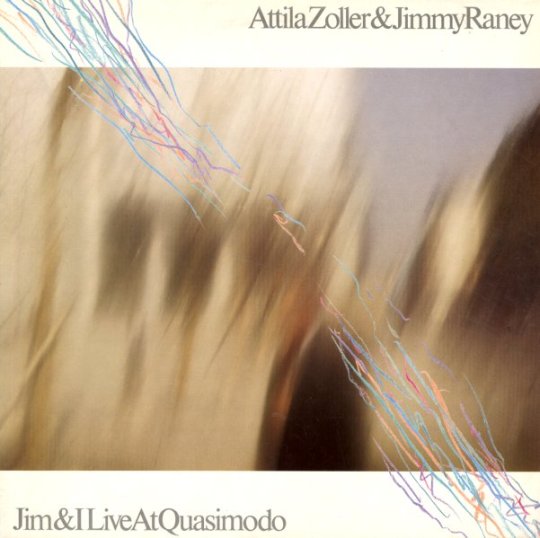
Hungarian guitarist Attila Zoller had selective affinity for other artists on the instrument, so much so that his mid-career period is seeded by fateful encounters with plectrist peers. Most prolific among these partnerships was his prudent pairing with Jimmy Raney. A popular proponent of bop-based jazz, Raney was in a similar exploratory headspace when the two joined forces on a trio of recordings for the German L + R label over a seven-year span. Concert dates from Frankfurt (’80) and Berlin (’86) find the duo spooling out lengthy dialogues that dabble in free improvisation while keeping codified melodies within reach. An earlier New York encounter (’79) explores their rapport in a studio. All three reissues on the Japanese Ultra-Vybe imprint are aces.
Steve Swell’s Fire Into Music
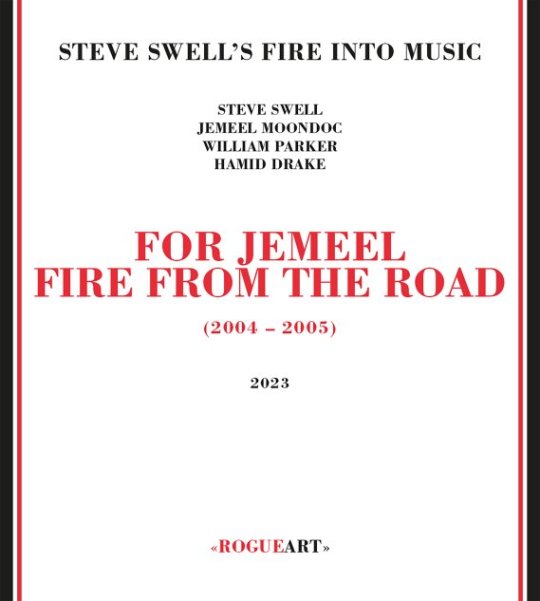
Simultaneously emblematic of NYC free jazz in the early aughts and fiercely dedicated to resisting pitfalls of provincialism by touring generously and rigorously, trombonist Steve Swell’s Fire into Music was one of the finest quartets of its kind. Posthumously dedicated to the late altoist Moondoc, this three CD set collects a trio of small venue concerts by the band from gigs in Texas and Ontario. As with the horns, William Parker and Hamid Drake are ideally suited to the extended, expository freebop safaris that formed the ensemble’s flexible repertoire. Swell’s the leader on paper but sagely embraces musical communalism without fail.
Intakt

Running a physical media imprint in the 21st century is an inherently parlous enterprise, but this steadfast Swiss label continues to evidence how it’s done. This year’s standout catalog entries include Andrew Cyrille’s Music Delivery/Percussion, the octogenarian drummer’s third solo album and first in 45-years; bassist Jöelle Leandré’s solo Zurich Concert; pianist Aruán Ortiz’s Serranías Sketchbook for Piano Trio; Beyond Dragons by the trio of saxophonist Angelika Niescier, cellist Tomeka Reid, and drummer Savannah Harris, and Ohad Talmor’s Back to the Land, a quartet-plus-guests survey that takes its compositional focus an archival workshop date by Ornette Coleman and Lee Konitz.
Ezz-thetics
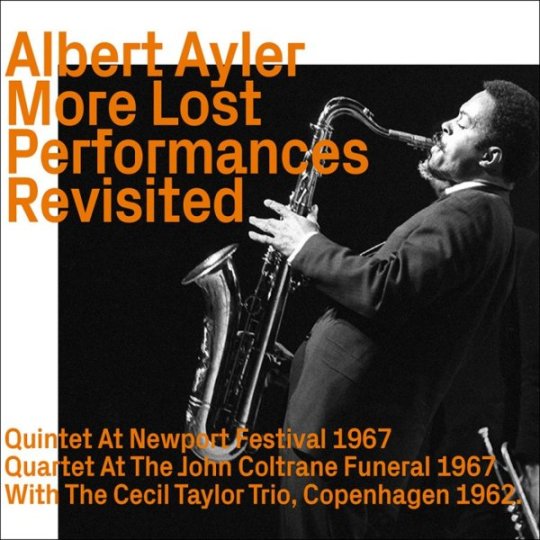
The appearance of the Swiss Ezz-thetics imprint four years ago raised both eyebrows and ire. Lacking access to master tapes, veteran free jazz and new music producer Werner Uehlinger sourced commercially released editions instead, employing ace audio engineer Peter Pfister succeeded by Michael Brandli to rejuvenate and refurbish the recordings, stateside copyright considerations be damned. Reaction was expeditious and polemical, but proof is in the hearing as most of the label’s dozens of releases sound better than their original incarnations. Catalog highlights this year include another round of Albert Ayler airshots including his pivotal meeting with the Cecil Tayor Trio in 1962 on More Lost Performances, Charles Mingus’ At Antibes 1960, and Ornette Coleman’s At the Golden Circle.
Fresh Sound
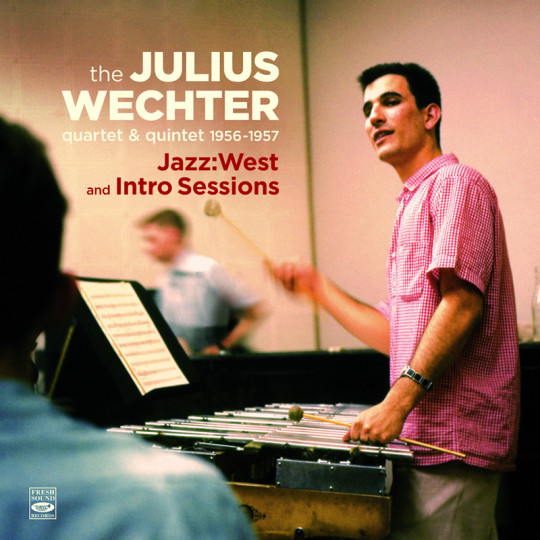
Jordi Pujol is akin to Uehlinger in that he refuses to let his vision and ambitions as a producer be abbreviated by external opinion. In Pujol’s case it’s yielded a bountiful inventory of antiquarian titles that rights holders have shown little to zero interest in restoring to begin with. Cases in point for this year include a definitive collection of obscurando saxophonist Boots Mussulli’s works; concert and studio collections by the Count Basie alumni tandem of Al Grey and Billy Mitchell; hens’ teeth rare leader sessions by Arthur Lyman vibraphonist Julius Wechter; and a two-fer of Julliard-trained Ellingtonian Cass Harrison piano trio albums. Exciting guilty pleasures all around.
Playing for the Man at the Door

As complex as he was controversial, Robert “Mack” McCormick deserves consideration in the esteemed company of other maverick cultural archivists like Alan Lomax, George Mitchell, and Harry Smith. With a preservationist purview mostly comprising Texas and bordering states, McCormick spent much of his adult life obsessively documenting and disentangling the cultural capital of the region through recordings, photography, interviews, essays, and research. Smithsonian Folkways became repository for the massive reservoir after his passing and this box is the first in what will hopefully be multiple dispatches from the same. Unreleased field recordings of Mance Lipscomb and Lightnin’ Hopkins represent the big names, but works by the likes of Hop Wilson, Cedell Davis, Robert Shaw, and a handful of others are just as persuasive. Bongo Joe Coleman’s impassioned presidential pitch closing the set will have listeners pining for a time when third party Executive Branch candidacy didn’t seem so fraught.
Joni Mitchell Archives - Vol. 3, The Asylum Years 1972 to 1975
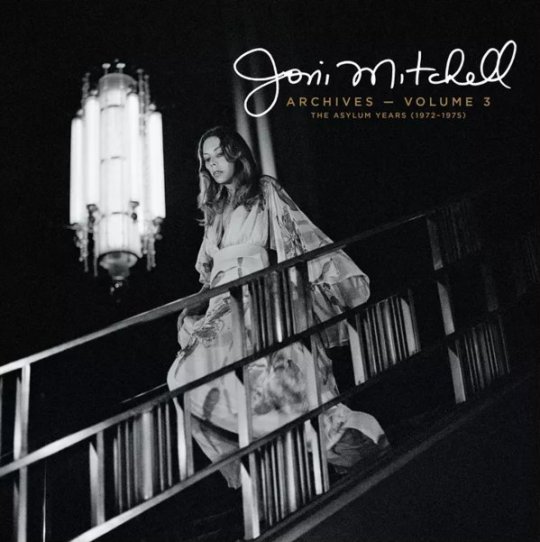
Mitchell’s continuing project corollary to her old friend Neil Young’s analogously exhaustive retrospective enterprise, this third entry in the series finds her 30-something-self further broadening the lens of her art beyond the solo concert music that dominated the first two boxes. There are stirring solitary shows here, too, but it’s the band offerings that prove most revealing, particularly in the company of reedist Tom Scott’s fusion group L.A. Express. James Taylor, Graham Nash, and David Crosby lend contributory hands, and there’s a brief but intriguing collaboration with Young alongside a trove of demos and workshop versions of songs from her first three albums for Asylum.
Martin Davidson

In closing, another memorial. Martin Davidson wasn’t a musician, but European free improvisation as an art and archive would be a fraction of what it is without his copious and enduring work. As steadfast proprietor of the Emanem label he put his resources into musicians whose efforts frequently fell outside the probability of consistent commercial remuneration. Under his aegis, influential improvisers like Steve Lacy, Derek Bailey, Evan Parker, and Paul Rutherford gained robust catalogs alongside other aspiring artists who never garnered even niche cachet. Davidson was a curmudgeon and an anachronism, trusting his ears implicitly, suffering the indignities of inquiries from strangers seeking audience with the hip hop icon who shared the phonetics of his imprint’s name, and advancing the pleasures of physical media well past their purported expiration date. He was also a talented writer, adding invaluable context to his releases through first-person testimony and critique. Martin will be missed.
And as is tradition in this 20th iteration of this year-end exercise, 25 more titles in stochastic order. Thanks to all for reading, and gratitude to Jennifer Kelly for providing the forum and formatting.
Rodrigo Amado’s The Bridge – Beyond the Margins (Trost)
James Brandon Lewis – For Mahalia with Love (Tao Forms)
Henry Threadgill – The Other One (Pi)
Guillermo Gregorio – Two Trios (ESP)
Rob Brown – Oceanic (RogueArt)
Rich Halley Quintet – Fire Within (Pine Eagle)
Milford Graves w/ Arthur Doyle & Hugh Glover – Children of the Forest (Black Editions)
Mike Osborne – Starting Fires: Live at the 100 Club 1970 (British Progressive Jazz)
Jim Hall – Uniquities Vol 1 + 2 (ArtistShare)
Madhuvanti Pal – The Holy Mother (Sublime Frequencies)
V/A – On the Honky Tonk Highway with Augie Meyers & the Texas Re-Cord Company (Bear Family)
Mal Waldron & Terumasa Hino – Reminiscent Suite (Victor/BBE)
Oum Kalsoum – L’Astre D’Orient 1926-1937 (Fremeaux & Associates)
Sonny Rollins w/ the Heikki Sarmanto Trio – Live at Finlandia Hall Helsinki 1972 (Svart)
V/A – Equatoriana: El Universo Paralelo de Polibio Mayorga (Analog Africa)
Evan Parker – NYC 1978 (Relative Pitch)
V/A – If There’s a Hell Below (Numero Group)
John Coltrane – Evenings at the Village Gate (Impulse)
Derek Bailey & Paul Motian – Duo in Concert (Frozen Reeds)
Peter Brötzmann/Fred Van Hove/Han Bennink/Albert Mangelsdorff – Outspan 1 & 2 (FMP/Cien Fuegos)
Hasaan Ibn Ali – Reaching for the Stars: Trios/Duos/Solos (Omnivore)
Mark Dresser – Tines of Change (Pyroclastic)
Steve Millhouse – The Unwinding (Steeplechase)
Myra Melford’s Fire and Water Quintet – Hear the Light Singing (RogueArt)
V/A – Destination Desert: 33 Oriental Rock & Roll Treasures (Bear Family)
#dusted magazine#derek taylor#yearend 2023#Peter Brötzmann#Wayne Shorter#jazz#kidd jordan#charles gayle#kirk knuffle#joe mcphee#don byas#fred anderson#Jason Adasiewicz#natural information society#Abdul Wadud#marion brown#art pepper#Pan Afrikan People’s Arkestra#Alan Skidmore#The jazz doctors#Attila Zoller & Jimmy Raney
15 notes
·
View notes
Text
Phill Niblock, 1933-2024
youtube
Dusted celebrates the life and mourns the passing of Phill Niblock. He was a trusted photographer of jazz musicians, a creator and facilitator of avant-garde infrastructures, a documenter of hard labor, a celebrant of good times, and a crafter of undiluted minimal music that was made to be played at maximum volume. He died on January 8, 2024.
Bill Meyer
16 notes
·
View notes
